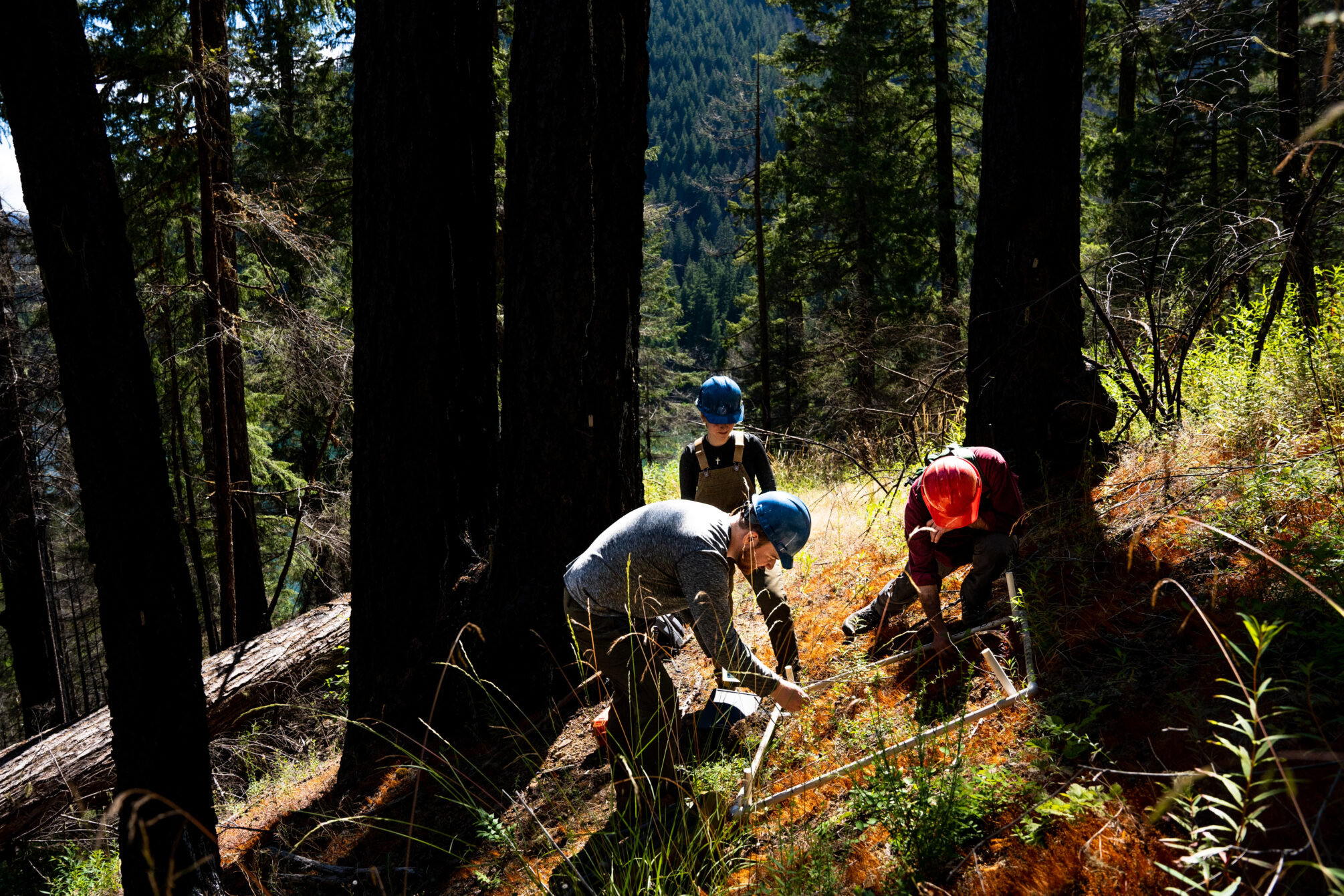
This post is part of the LTER’s Short Stories About Long-Term Research (SSALTER) Blog, a graduate student driven blog about research, life in the field, and more. For more information, including submission guidelines, see lternet.edu/SSALTER
by Cole Doolittle, graduate student at Marquette University and the Andrews LTER
Wildfires are a paradox of destruction and new life. For many of us, the images that typically come to mind with “wildfire” are those of destruction and loss – towering flames engulfing trees, homes reduced to ashes, and landscapes charred beyond recognition. Yet, on the other hand, wildfires play a leading role in sparking new life, working as agents of renewal to reimagine the composition of an ecosystem. Straddling these two realities, ecological researchers like myself seek to understand fire as an ecological process integral to our understanding of biodiversity.
Nature: A Delicate Balance of Destruction and Resilience
Stepping into a post-wildfire landscape is like entering an alien world. The ground, often unstable and littered with debris, becomes treacherous to navigate. Above, charred trees and loose branches loom, posing a constant risk of falling. Even the air we breathe is strange, filled with particles from the recent inferno. A haze of “campfire” smell can persist for years after a fire as charred logs decay. Like the campfire smell, the physical hazards don’t vanish overnight – they linger, sometimes for decades, as the forest grapples with its new reality.
Emotionally, it’s a stark reminder of nature’s raw power and unpredictability. Standing amidst the charred remains of what was once a thriving ecosystem, one becomes acutely aware of our fragility, the transience of life, and the destructive potential of natural forces.
Yet, it’s within these scorched landscapes that nature’s resilience truly shines. The first signs of life are profoundly moving – green shoots thrusting through the charred soil, insects humming in the air, birds reclaiming their lost homes. Each new year brings new life in abundance, a powerful testament to nature’s tenacity and adaptability.
Uncovering the Secrets of Wildfire
As a researcher, I run (carefully, of course) into these burned landscapes to capture everything from biophysical conditions (temperature, humidity) to understory plant composition and diversity. Paired together, this information is invaluable in enhancing our understanding of how ecological communities respond and adapt to wildfires. Work like this directly influences post-fire land management and can help guide future forest management and conservation strategies.

Credit: Gabriel De La Rosa, CC BY-SA 4.0
Despite the destruction of wildfires, they’re critically important promoters of biodiversity and environmental heterogeneity. While a fire may seem monolithic – like a wall of flames – in reality they often occur at mixed-severity. This means that as I run (again, carefully) through the burned landscape I quickly move from high-severity areas where everything is destroyed to low-severity areas where only the smallest, most vulnerable plants perished. Often these areas occur within 10 meters of each other, creating a highly heterogenous landscape critical to creating habitat for a variety of species.
Ecologists call these pockets of low-severity burns “wildfire refugia”. In these locations, the pre-fire ecological community is mostly intact, often including small mammals and insects that were able to hide as the fire crept through. After the fire these refugia become critical hotspots for pollinators and herbivores, as well as important reservoirs of seeds to begin the regeneration process in nearby high-severity burns.
One advantage of working with the Long-Term Ecological Research (LTER) network is the breadth of collaborators and data available to early career ecologists like me. With help from my colleagues, we’re working to develop a holistic understanding of ecological processes through time. The burned landscape I see after a fire is just one chapter in the story of the forest, and those previous chapters may be critical to help us understand the things happening right before our eyes.

Credit: Gabriel De La Rosa, CC BY-SA 4.0
A Window into the Future
With climate change leading to hotter, drier conditions, we’re likely to see more frequent and intense wildfires in the future. This may mean less “mixed-severity” fire, and therefore less refugia for plants, mammals, insects, and other important taxa. In this context, developing a deep understanding of post-fire dynamics becomes even more crucial. Using these tragic events, we gain a window into the future providing insights into how our ecosystems might adapt to this changing reality. The resilience we see in these environments is a beacon of hope, reminding us that even amidst destruction, there is room for rebirth and growth.
As we share our findings and experiences through platforms like the SSALTER blog, we hope to spark curiosity and promote a deeper understanding of wildfires’ role in our ecosystems. It’s a unique and important perspective that challenges us to see beyond the immediate devastation and recognize the intricate balance of life, death, and regeneration that defines our natural world.

Hello, everyone! I’m Cole Doolittle, a graduate student at Marquette University and an affiliate of the H.J. Andrews Experimental Forest LTER in the Cascade mountains of Oregon. My research focuses on exploring the drivers of local plant diversity in changing environments. Connect with me on my website, coledoolittle.com.










